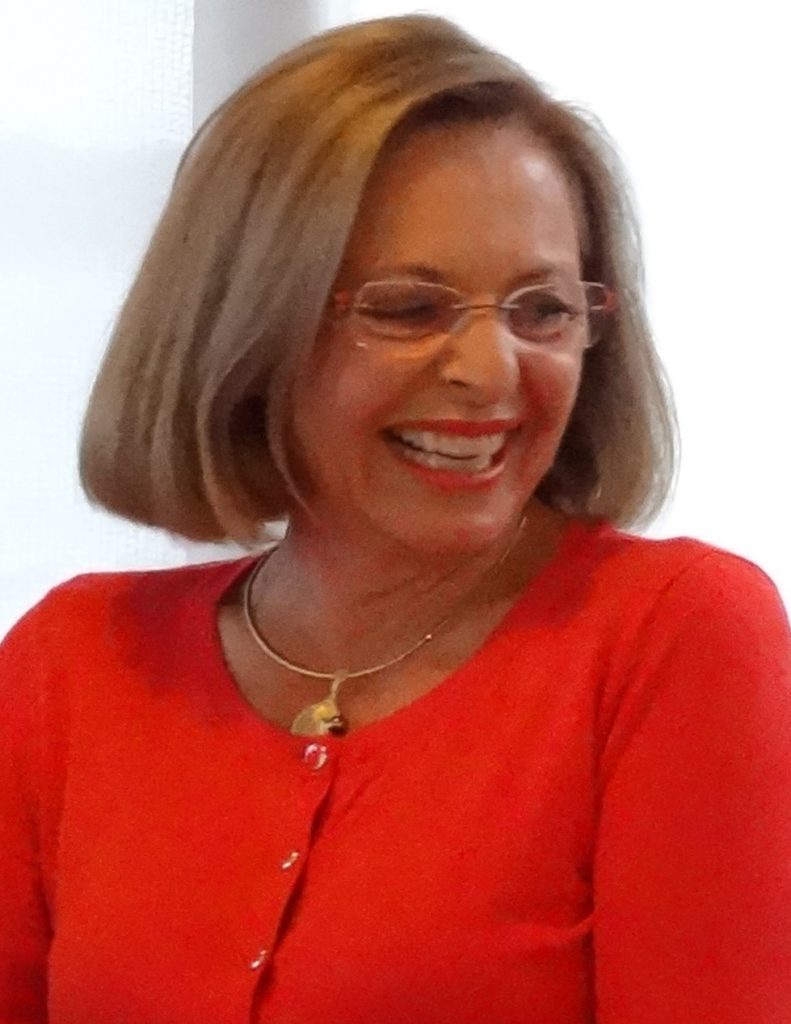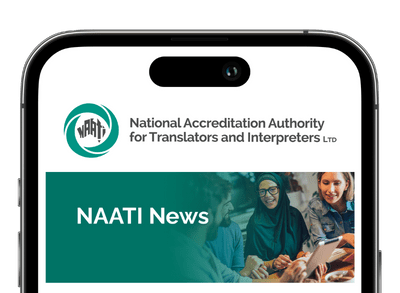Last week I received a phone call from a woman for whom I used to interpret more than 15 years ago. It was such a surprise and made me think about the rewards of this profession. In this woman’s case I interpreted for the whole family when they found themselves newly arrived in Australia and in very traumatic and desperate circumstances. She said she’d never forgotten the valuable service I had provided, and her family always remembered how much I’d helped them by removing the language barrier during those difficult times. I interpreted for them over many months, even years, and got to know them well. It was such a pleasure to hear from them and catch up with what they had made of their lives.
I was extremely moved by this phone call and reminded of the impact that our work can have on people and how important it is that we do our job well and with empathy. This is what makes interpreting so meaningful and rewarding. I remembered how I felt arriving in Adelaide as a young teenager with no English. My parents were Polish and had migrated to Argentina via England in the late 1940s. I was born in Argentina and grew up on a remote station in the lakes’ district surrounded by the Andes.
I trained as an interior designer at the South Australian Institute of Technology after finishing my schooling and worked in architectural practices for a few years. Like many young Australians I took off for a working holiday in Europe and worked in England for about 5 years. I had some interesting jobs, the most memorable being as a bookkeeper for a Lord (that was a fast learning curve!) and managing a small Art Nouveau gallery in central London. I took every opportunity to travel between jobs until my return to Australia. I felt disconnected from the design world after such a long break. In 1978 a friend saw an ad for interpreters and suggested that I might want to give it a try as I was fluent in Spanish and Polish. The rest is history as they say -I had found my niche!
Initially I completed the TAFE ‘Level 2’ certificate courses for Spanish and Polish, some of it under the guidance of Jill Blewett. Funnily enough in those days before the recording era came in, interpreting exams were held live. I went on to sit for ‘Level 3’ in both languages, completed a Bachelor of Arts majoring in Spanish and proceeded to a translator’s accreditation in Spanish.
During the 1990s I taught translation at Flinders University and interpreting at TAFE. Over the years my work at TAFE increased, but I continued working as a freelance translator and interpreter and I am still an active practitioner. I was also very involved in AUSIT from the beginning. My involvement with TAFE and AUSIT led to working closely with NAATI. There were a few NAATI accreditation reviews around 2001, 2005 and 2007 in which I participated. There was also a major change in the vocational sector with the introduction of the interpreting and translating training package in 2012. I was part of the Technical Reference Group for that and worked in consultation with the vocational sector, NAATI and the industry as a whole. I served both as a practitioner and as a member of the Vocational Education sector on the NAATI QAAC (Qualifications Assessment and Advisory Committee) and the NAATI SA Regional Advisory Committee. I currently serve on the NAATI Technical Advisory Committee (TRAC).
This involvement in both AUSIT and NAATI has been very valuable and has given me the opportunity to see the sector from multiple angles. Importantly, it has given me the privilege of working with some of the most respected members of the T&I community who broadened my knowledge and provided invaluable collegiate support, a process which continues to this day.
In 2011 NAATI began a journey to raise the standards of testing. I took part in some of the initial consultation workshops not realising that it was to be a very long journey (2011-2018), but also an incredible one, which eventually resulted in the complete review of the Accreditation system and the creation of Certification. I was involved in workgroups developing the new system, the testing and the completely re-vamped marking system. The work was underpinned by consultation with industry and research. The workgroups were comprised of practitioners, academics, service providers, AUSIT members and very capable NAATI staff, again all high-calibre colleagues with whom it was a pleasure to work.
There was an emphasis on transparency and accountability, and a strong desire to improve industry standards by improving quality at the entry point, whilst meeting the needs of demand and fairness to candidates. As a result of this work, the support of AUSIT, consultation with the whole industry and the willingness of NAATI to facilitate every avenue possible for improvement, NAATI produced the Translator and Interpreter Knowledge, Skills & Attributes (KSA’s), new test specifications for every test at every level, minimum training requirements and live interpreting tests. In addition, there was a completely new marking system based on rubrics which assess performance instead of penalising errors.
These were all things that many of us dreamed of as necessary factors and the basis for any improvements in the industry, but few of us thought we would ever see them come to fruition. The process has, at times, been extremely challenging, but always interesting.
Together with my colleagues at TAFE and in collaboration with the RMIT we produced more flexible training for interpreters and translators. I have also had the opportunity to work closely with Auslan and Deaf interpreters. There is still so much to do to improve the training available throughout Australia and go beyond the minimum requirement for those who want to enter the profession but need to acquire more skills.
The last 3 years have been a bit of a rollercoaster for our profession as a whole. I don’t expect to see huge results overnight, but have always kept the long-term goal in mind: how do we want to see the industry in 10- or 15-years’ time?
We have already seen some remarkable events, such as the Recommended National Standards for Working with Interpreters in Courts and Tribunals and the Guide for Clinicians Working with Interpreters in Healthcare Settings. We also know that many countries are looking to Australia as a model We have been leaders in community interpreting for many years.
I encourage the younger generation of interpreters and translators to become involved in their industry and work with AUSIT, ASLIA and other professional bodies, to reach out to mentors and to stay informed about what is happening in their industry. It enriches us all, makes our perspective much broader and our job more meaningful, particularly as most of us are freelancers who work in relative isolation.

I have benefited enormously, on a personal and professional level, I have learned new skills, have worked with many who have made significant contributions to our profession and am delighted to continue to work with them and with so many bright young people, who bring energy, vitality and new perspectives. I am very proud to be part of this most interesting and varied group of professionals: Australia’s interpreters and translators. It is an honour.
Magdalena Rowan is a NAATI Certified Interpreter and Translator and an AUSIT Fellow and Senior Practitioner.
